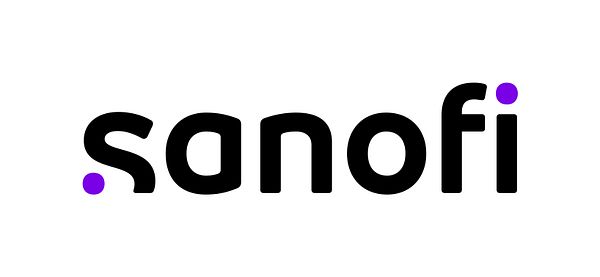Pressmeddelande -
ASCO: Sarclisa (isatuximab) är den första anti-CD38 som signifikant förbättrar progressionsfri överlevnad i kombination med VRd för nydiagnostiserat multipelt myelom, där högdosbehandling med autologt stamcellsstöd inte var indicerat, i fas 3.
- Sarclisa, i kombination med standardbehandlingen bortezomib, lenalidomid och dexametason (VRd) följt av Sarclisa-Rd, minskade risken för återfall eller död med 40% jämfört med VRd följt av Rd, hos patienter med nydiagnostiserat multipelt myelom, där högdosbehandling med autologt stamcellstöd inte var indicerat.
- Den primära utfallsmåttet progressionsfri överlevnad uppfylldes, vilket visar Sarclisas potential som den första kombinationen i denna klass, för att adressera behov i vården av nydiagnostiserade patienter där högdosbehandling med autologt stamcellstöd inte är indicerat.
- Fullständiga data publicerades samtidigt i New England Journal of Medicine (NEJM) och utgjorde underlaget för ansökan om regulatoriskt godkännande.¹
Data from the IMROZ phase 3 study demonstrated Sarclisa (isatuximab) in combination with standard-of-care bortezomib, lenalidomide and dexamethasone (VRd) followed by Sarclisa-Rd (the IMROZ regimen) significantly reduced the risk of disease progression or death by 40%, compared to VRd followed by Rd in patients with newly diagnosed multiple myeloma (NDMM) not eligible for transplant. IMROZ is the first global phase 3 study of an anti-CD38 monoclonal antibody in combination with standard-of-care VRd to significantly improve PFS and show deep responses in this patient population who often have poor prognoses.
The results were shared in an oral presentation at the American Society of Clinical Oncology (ASCO) annual meeting and simultaneously published in the New England Journal of Medicine (NEJM).
The use of Sarclisa in combination with VRd in transplant-ineligible NDMM is investigational and has not been fully evaluated by any regulatory authority.
Thierry Facon, MD
Professor of Haematology in the Department of Haematology, Lille University Hospital, Lille, France, member of French Academy of Medicine and IMROZ Principal Investigator:
“The significant progression-free survival benefit observed with Sarclisa combination therapy compared to VRd is important and encouraging for patients with newly diagnosed multiple myeloma. Effective frontline therapy has the potential to modify the course of the disease, which is a key outcome for transplant-ineligible patients who often face high rates of attrition in later lines of therapy. The IMROZ results demonstrate the promise of Sarclisa as a backbone to frontline therapy, which may improve long-term outcomes for this incurable disease.”
Key Results
IMROZ is a global, randomized, multi-center, open-label study. At the data cut-off of September 26, 2023, through the median follow-up of 59.7 months, the following were observed for Sarclisa-VRd compared to VRd:
Primary endpoint
• 40% reduction in the risk of disease progression or death for patients treated with Sarclisa-VRd versus VRd (HR 0.596; 98.5% CI: 0.406 to 0.876; p=0.0005). At the median follow-up of 59.7 months, the median PFS with the Sarclisa-VRd combination was not reached versus 54.3 months with VRd.
• The estimated PFS at 60 months was 63.2% for patients treated with Sarclisa-VRd versus 45.2% for VRd.
Secondary endpoints
• Approximately three-quarters (74.7%) of patients treated with Sarclisa-VRd achieved a complete response (CR) compared to 64.1% of patients taking VRd (OR 1.7; 95% CI: 1.097-2.5; p=0.008).
• More than half (55.5%) of patients treated with Sarclisa-VRd achieved MRD negative CR compared to 40.9% of patients taking VRd (OR 1.8; 95% CI: 1.229-2.646;p=0.0013).
• MRD was sustained for at least 12 months among nearly half (46.8%) of patients in the Sarclisa-VRd arm compared to less than one-quarter (24.3%) of patients taking VRd (OR 2.7; 95% CI: 1.799-4.141).
At the date of data cut-off, 47.2% of patients (125/263) treated with Sarclisa-VRd and 24.3% of patients (44/181) treated with VRd were still on treatment. The median treatment duration for the Sarclisa-VRd combination was 53.2 months vs. 31.3 months for VRd.
The safety and tolerability of Sarclisa observed in this study was consistent with the established safety profile of Sarclisa-VRd with no new safety signals observed. Grade ≥3 treatmentemergent adverse events (TEAE) occurred in 91.6% of patients taking Sarclisa-VRd and 84% of patients taking VRd. Treatment-emergent events (TAE) of any grade led to treatment discontinuation in 22.8% of patients taking Sarclisa-VRd and 26% of patients taking VRd.
Peter C. Adamson
Global Development Head, Oncology:
“Over the last 20 years, the pace of multiple myeloma research has continued to accelerate, paving the way for treatment advancements with potential to improve outcomes for patients. With our commitment to help lead the way for patients with this disease, we welcomed the IMROZ results presented at ASCO, and now published in NEJM, which demonstrate Sarclisa’s potential to improve progression-free survival in patients who are newly diagnosed and transplant ineligible. We want to express our deep gratitude to the patients, their families and investigators for their dedication to clinical research.”
Advancing Sarclisa in Newly Diagnosed Multiple Myeloma
The US Food and Drug Administration (FDA) accepted for Priority Review the supplemental Biologics License Application (sBLA) for the investigational use of Sarclisa in combination with VRd for the treatment of patients with transplant-ineligible NDMM. A regulatory submission is also under review in the European Union (EU). If approved, Sarclisa would be the first anti-CD38 therapy in combination with standard-of-care VRd in newly diagnosed patients not eligible for transplant, which would be the third indication for Sarclisa in multiple myeloma.
The IMROZ data will also be presented during the plenary scientific session at the European Hematology Association (EHA) Annual Congress on June 15, selected as one of the top six abstracts to be featured at the congress. There will be two additional oral presentations at EHA featuring results from phase 3 studies of Sarclisa in NDMM. Additionally, the IMROZ abstract was hand-selected to be included in the 2024 Best of ASCO program, held later in the summer of 2024, following the ASCO Annual Meeting.
Sanofi’s oncology pipeline and portfolio prioritize areas of high unmet need for difficult-to-treat cancers, including multiple myeloma, which remains an incurable disease despite recent advances in treatment.
About the IMROZ study
The randomized, multi-center, open-label IMROZ phase 3 clinical study enrolled 446 patients with newly diagnosed, transplant-ineligible multiple myeloma (MM) across 21 countries and 104 centers. During the study, Sarclisa was administered through an intravenous infusion at a dose of 10 mg/kg once weekly for five weeks during first 42-day cycle and once every two weeks in cycles 2 to 4 in combination with subcutaneous bortezomib, oral lenalidomide and intravenous or oral dexamethasone. Then Sarclisa was administered every 2 weeks from cycle 5 to 17 and every 4 weeks in cycles 18+ during 28-day cycles in combination with lenalidomide and dexamethasone at the standard dose, until disease progression, unacceptable safety profile or patient’s decision to stop the study treatment.
The primary endpoint was progression-free survival. Key secondary endpoints include complete response rate, MRD negativity rate for patients with a complete response, very good partial response or better rate, overall survival. Other secondary endpoints are: overall response rate, time to progression, duration of response, time to first response, time to best response, progression-free survival on next line of therapy, progression-free survival by MRD status, sustained MRD negativity greater than or equal to 12 months rate, safety, pharmacokinetic profile, immunogenicity, disease-specific and generic health-related quality of life, disease and treatment-related symptoms, health state utility, and health status.1
The use of Sarclisa in combination with VRd in transplant-ineligible newly diagnosed MM is investigational and has not been fully evaluated by any regulatory authority.
About Sarclisa
Sarclisa is a monoclonal antibody that binds to a specific epitope on the CD38 receptor on multiple myeloma (MM) cells, inducing distinct antitumor activity. It is designed to work through multiple mechanisms of action including programmed tumor cell death (apoptosis) and immunomodulatory activity. CD38 is highly and uniformly expressed on the surface of MM cells, making it a potential target for antibody-based therapeutics such as Sarclisa.
Based on the ICARIA-MM phase 3 study, Sarclisa is approved in >50 countries, including the US and EU, in combination with pomalidomide and dexamethasone for the treatment of patients with relapsed refractory MM (RRMM) who have received ≥2 prior therapies, including lenalidomide and a proteasome inhibitor and who progressed on last therapy. Based on the IKEMA phase 3 study, Sarclisa is also approved in 50 countries in combination with carfilzomib and dexamethasone, including in the US for the treatment of patients with RRMM who have received 1–3 prior lines of therapy and in the European Union for patients with MM who have received at least 1 prior therapy. In the US, the generic name for Sarclisa is isatuximab-irfc, with irfc as the suffix designated in accordance with Nonproprietary Naming of Biological Products Guidance for Industry issued by the US Food and Drug Administration (FDA).
Sarclisa continues to be evaluated in multiple ongoing phase 3 clinical studies in combination with current standard treatments across the MM treatment continuum. It is also under investigation for the treatment of other hematologic malignancies, and its safety and efficacy have not been evaluated by any regulatory authority outside of its approved indication.
For more information on Sarclisa clinical studies, please visit www.clinicaltrials.gov.
About multiple myeloma
MM is the second most common hematologic malignancy,2 with more than 180,000 new
diagnoses of MM worldwide yearly.3 Despite available treatments, MM remains an incurable malignancy with an estimated 52% five-year survival rate for newly diagnosed patients.4 Since MM does not have a cure, most patients will relapse. Since MM does not have a cure, most patients will relapse. Relapsed MM is the term for when the cancer returns after treatment or a period of remission. Refractory MM refers to when the cancer does not respond or no longer responds to therapy.
Kontakt
Lovisa Fasth
Communications Business Partner
+46 76 021 01 24
lovisa.fasth@sanofi.com
Referenser
1 Isatuximab, Bortezomib, Lenalidomide, and Dexamethasone for Multiple Myeloma | New England Journal of Medicine (nejm.org), https://url.de.m.mimecastprotect.com/s/11lUClRZ4Esq57l9kiGBPfp?domain=nejm.org
2 Kazandjian. Multiple myeloma epidemiology and survival: A unique malignancy. Semin Oncol. 2016;43(6):676-681. https://doi:10.1053/j/seminoncol.2016.11.004
3 World Health Organization. Multiple Myeloma. https://gco.iarc.who.int/media/globocan/factsheets/cancers/35-multiple-myeloma-fact-sheet.pdf(who.int) Accessed March 2024.
4 Fonseca, R., Usmani, S.Z., Mehra, M. et al. Frontline treatment patterns and attrition rates by subsequent lines of therapy in patients with newly diagnosed multiple myeloma. BMC Cancer. 2020: 20(1087).
Ämnen
Kategorier
Om Sanofi
Vi är ett globalt läkemedelsföretag som genom vår innovation söker vetenskapliga mirakel för att förbättra människors liv. Våra medarbetare i över 100 länder arbetar för att transformera läkemedelsbehandling för att göra det som tidigare var omöjligt möjligt. Vi skapar läkemedelsbehandlingar och vacciner som förbättrar och räddar miljontals liv världen över, med hållbarhet och socialt ansvarstagande i fokus.

